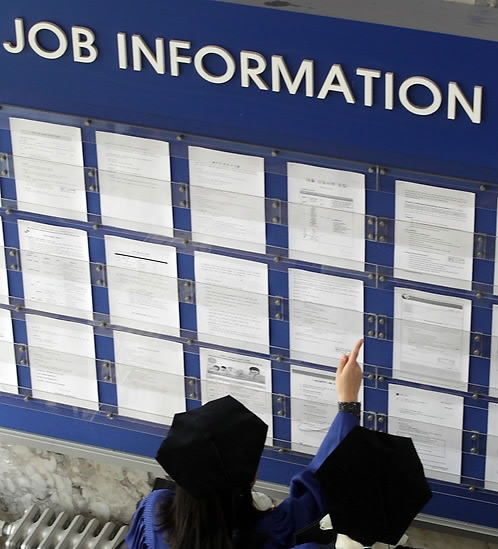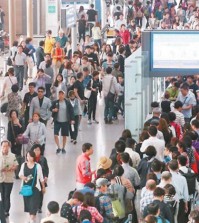- California Assembly OKs highest minimum wage in nation
- S. Korea unveils first graphic cigarette warnings
- US joins with South Korea, Japan in bid to deter North Korea
- LPGA golfer Chun In-gee finally back in action
- S. Korea won’t be top seed in final World Cup qualification round
- US men’s soccer misses 2nd straight Olympics
- US back on track in qualifying with 4-0 win over Guatemala
- High-intensity workout injuries spawn cottage industry
- CDC expands range of Zika mosquitoes into parts of Northeast
- Who knew? ‘The Walking Dead’ is helping families connect
S. Korea’s jobless rate drops to 4 pct in March
SEJONG, April 15 (Yonhap) — South Korea’s jobless rate fell in March from a month earlier due to seasonal factors and more hiring by the manufacturing and service sectors, a government report said Wednesday.
According to the report by Statistics Korea, the jobless rate stood at 4 percent last month, down from 4.6 percent in February. But it was up 0.1 percentage point from a year earlier.
The seasonally adjusted jobless rate also fell to 3.7 percent in March from 3.9 percent the month before.
The number of employed people reached 25.5 million last month, with 338,000 new jobs being created compared with the year before, the report showed. The increase in jobs, however, represents a dip from the 376,000 new positions in February, and is the lowest figure tallied since May 2013, when the number of new jobs created hit 265,000.
The employment rate for people between the ages of 15 and 64 stood at 64.9 percent in March, up 0.4 percentage point from a year earlier and unchanged from February.
“The on-month drop in the jobless rate is linked to students returning to school following the winter break and people who sought jobs in January and February, when jobs are generally harder to come by, securing positions and starting work,” said Sim Won-bo, head of the agency’s employment statistics division.
March also saw an on-month fall in the number of new jobs created as the figure for the previous month was bolstered by temporary service and logistics positions created ahead of the Lunar New Year holiday that fell on Feb. 19, he said.
The unemployment rate for young people between the ages of 15 and 29 fell to 10.7 percent in March from 11.1 percent a month earlier. The February figure was the highest monthly tally since the office began compiling related data in 2000.
The so-called labor underutilization indicator inched down to 11.8 percent last month from a record high of 12.5 percent in February.
The indicator is based on guidelines made by the International Labor Organization (ILO) and reflects the number of people who are “underemployed” and those who currently hold part-time jobs but want full-time work.
This data also counts unemployed people who have given up looking for work not by choice but due to other circumstances, which makes them potential job seekers.
A rise in this number is an indication that employment conditions felt by ordinary people are worse than what official jobless figures show.
Starting last year, the statistical office started to provide the indicator to give a more accurate picture of the country’s labor market situation.
















